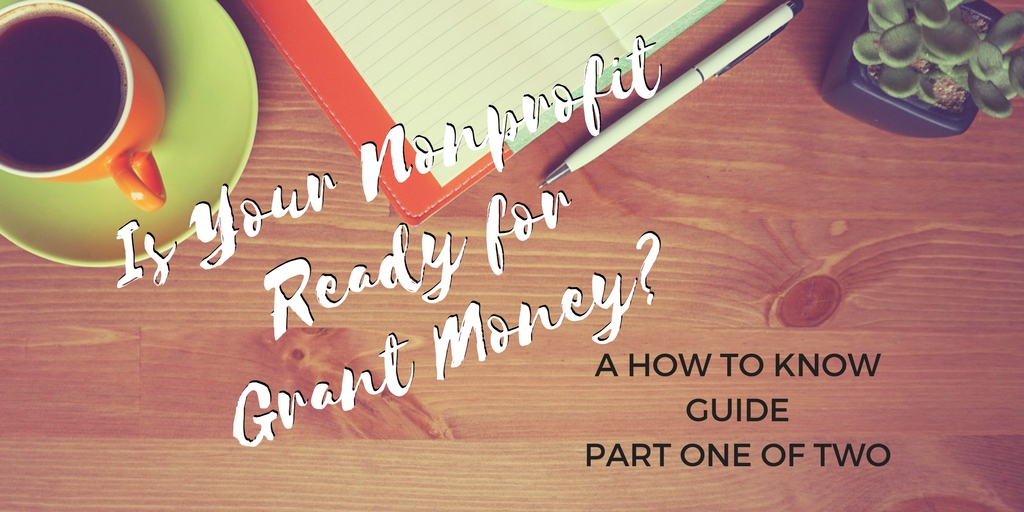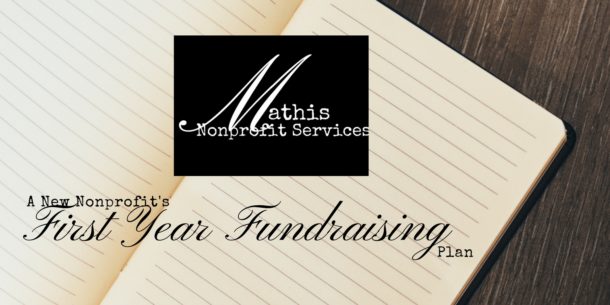In the last post, we discussed getting your nonprofit organizationally and operationally ready for Grants. In this post, we’ll talk about being financially and programmatically ready.
Financial
You must have an operating budget. This should be a yearly budget approved by the Board. As a new or small nonprofit, your budget won’t be very big. Some expenses you will want to have are a website, advertising, rent, office supplies, fundraising activities, and insurance.
When determining your fundraising budget, a fundraising plan is essential. Your Fundraising Committee can be tasked with putting the plan together. A fundraising plan is important for an organization getting ready for grant money. Why? Foundations want to know they aren’t the only investors. Building an individual donor program and specifying fundraising activities lets Foundations know you won’t be getting money only from them and are reaching out to the community for Support. Also, the results of your fundraising activities show others have invested in your cause.
Speaking of investing in your cause, Board members are where it all starts. Board members should be invested with their time and with their money. Foundations look for 100% Board participation. The bylaws determine the minimum amount of financial investment a Board member will have through their Board dues. This can range from a dollar to $5,000. The good news is that Foundations don’t ask how much the Board invests in the organization but the percentage of participation.
Stable Finances
Do you have multiple income streams? Foundations don’t want to be your only income source. It looks like you aren’t committed to making your nonprofit work. It also says you don’t have a viable cause to the extent others see your value in the community.
Have you met local, state, and federal requirements? Did you file a 990 or 990-EZ It may be as simple as filling out a postcard to report your finances? Check with your CPA about the information and Method you need to comply with the requirements.
A financially stable organization has accurate reporting. This means your books are in order and you are accurately reporting your finances. If you need help with books, hire a CPA to get you started.
The last financial item on the list is an independent accounting review of your organization if your budget is $250,000 or less. A budget over $250,000 will require an audit. A CPA firm will be able to do this for you. No offense here- Foundations don’t want to take your word that you’re nonprofit is stable and running financially sound. They will want 2 years with no violations to put you higher in their funding list.
Moving Forward
Remember, Foundations consider you new until your third year of operations. This gives you time to prepare.
- Put together an operational budget for this fiscal year (what that looks like for you.) The 9 Step Action Guide covers this in step 3.
- Put together a fundraising plan.
- Build a donor program to receive donations. The 9 Step Action Guide has some ideas in steps 6-9.
- Put emphasis on 100% Board participation.
- Look at how you can have multiple income streams. Your fundraising plan will help.
- Are you operating in the black?
- Do you have a system and are meeting local, state, and federal requirements?
- Are you accurately reporting your books? You may want a CPA to take a look if you are unsure.
- Do you have or have scheduled with a CPA an independent accounting review?
Programs
Foundations want to invest in something specific even if it is a general operating expense. Programs are a good way to ask for specific funding. A current operating program will satisfy having something to invest in. There should be detailed documentation of how the program runs. If you are trying to establish a program, here’s the post to help you get started. Having some donor money and looking for Foundations to invest in program development is an option. Foundations typically want a track record, however.
You will have to establish need and document that need. One of the sections in a grant proposal is dedicated to a need statement. The program development worksheet addresses this issue.
Measurable results will also be necessary in a grant proposal. You will need to provide at least a plan to measure results if you don’t have actual results. You will also need to document program achievement.
Your Board will also want to approve a program budget. This budget is not your operations budget. Think of the operations budget as the umbrella and the program budget as a micro budget of the operations budget. Foundations will want to know that your program has complete backing by the Board.
Once you start this program, how will it be sustained? Foundations don’t want to continuously fund your organization and run the risk of your organization becoming dependent on their funds.. Some ways a new nonprofit can sustain a program is (1) donations, (2) built in fees, and (3) events.
Last, you need program goals for 12 months. These goals include the number of participants and results. The SMART goals worksheet can help you establish them. Keep your goals doable and practical. Measure and keep track of the progress of these goals.
Moving forward
- Download the Program Development Worksheet. It was developed with grants in mind and helps you detail your program. If you don’t have a program, the worksheet will help you set one up. If you have a program, use the worksheet as a checklist to see what grant components you need to add.
For even more information on Programs, I have a blog post dedicated to the subject.


 Most nonprofit leaders lay awake at night trying to figure out how to fund their mission.
Hi! I'm Alesha.
I teach sustainable fundraising in a way that they can take action today so they can serve their clients.
I can help you move from just getting started funding your new nonprofit to gaining confidence in your fundraising and building relationships to knowing what works for your organization and looking at the infinite game when it comes to funding. I’ve worked with nonprofit Founders and written the book I HAVE MY 501(C)3! NOW WHAT?!? Your Blueprint to Starting Your Nonprofit Without Being the Sole Funder that lays the foundations for funding in a new nonprofit.
I’ve worked in Development (Fundraising) Departments in large organizations and I know the no cost, low-cost methods they use to bring in funding. I bring those sound strategies to the nonprofits I serve.
Most nonprofit leaders lay awake at night trying to figure out how to fund their mission.
Hi! I'm Alesha.
I teach sustainable fundraising in a way that they can take action today so they can serve their clients.
I can help you move from just getting started funding your new nonprofit to gaining confidence in your fundraising and building relationships to knowing what works for your organization and looking at the infinite game when it comes to funding. I’ve worked with nonprofit Founders and written the book I HAVE MY 501(C)3! NOW WHAT?!? Your Blueprint to Starting Your Nonprofit Without Being the Sole Funder that lays the foundations for funding in a new nonprofit.
I’ve worked in Development (Fundraising) Departments in large organizations and I know the no cost, low-cost methods they use to bring in funding. I bring those sound strategies to the nonprofits I serve.